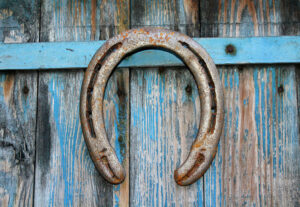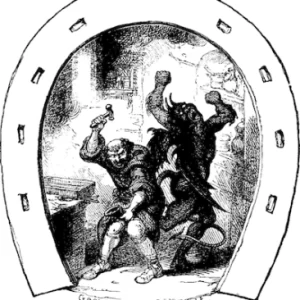When it comes to global symbols, few possess the universal charm and mystery of the horseshoe. This emblem, steeped in history and culture has transcended its humble beginnings to become a potent signifier of luck, protection, and spiritual meaning. Today, we embark on a captivating exploration of the horseshoe symbol, unraveling its layers and discovering its significance across various cultures.
The Horseshoe’s Ascendancy
The horseshoe symbol origin lies shrouded in the mists of antiquity. Its luck-bringing properties are celebrated across civilizations. Historically, iron, the material most horseshoes are crafted from, and the fire used to forge them, were believed to ward off evil spirits. This belief, coupled with the horseshoe’s crescent shape. A reminiscent of many fertility and protection symbols – cemented its status as an amulet of good fortune.

The horseshoe symbol meaning varies yet often overlaps in different traditions. In horseshoe symbol Greek mythology, the horseshoe is linked to Hermes. It suits to the god of travel and commerce, suggesting protection and prosperity. Although the birth story of the symbol varies, its meaning has always revolved around a similar point: Hanging a horseshoe on one’s door is thought to bring good luck and keep evil spirits at bay.
Horseshoe and the Devil: A Tale of Protection
The story of the horseshoe and the devil is a popular legend that explains the origin of the belief in horseshoes as a symbol of good luck and protection against evil. The most famous version of this tale involves Saint Dunstan, who was a blacksmith before becoming the Archbishop of Canterbury in the 10th century. The story goes as follows:

One day, the devil came to Saint Dunstan and asked him to shoe his horse. Recognizing the devil, Dunstan agreed but instead of shoeing the horse, he nailed a horseshoe to the devil’s own foot, causing him immense pain. The devil howled and begged for mercy. Dunstan agreed to remove the horseshoe only on the condition that the devil would never enter a house with a horseshoe hung above the door.
Around other cultures, the symbolism of the horseshoe is less about specific legends and more about its shape, material, and the general human desire for protection and good fortune. The horseshoe’s crescent shape can be associated with various symbols of luck, fertility, and protection against the evil eye in different cultures.
Upside Down or Right Side Up: The Orientation Debate
The debate over an upside-down horseshoe symbol meaning is as old as the symbol itself. Some say that hanging it with ends pointing downwards ensures luck pours onto those entering the home. Others argue that the ends should point upwards, cradling and keeping the luck from spilling out. Cultural preferences often dictate the orientation, but the consensus leans towards hanging it with points upward to capture good fortune.
Placement and Practice
So, where do you place a horseshoe for good luck? Traditionally, affixing it above your home’s entrance works wonders in attracting good vibes and warding off negativity. For those keen on embracing its protective aura, placing a horseshoe in the living room or above the fireplace can also serve as a beacon of positive energy and a deterrent to malevolent forces.

Incorporating a horseshoe into your space goes beyond mere decoration; it’s an invitation to the mystical, a nod to centuries of lore and belief in the power of symbols to influence our lives. Whether through a vintage, iron horseshoe above your door or a modern representation woven into your home’s decor, the essence of the horseshoe as a guardian and bringer of good fortune remains potent.
In Closing: A Timeless Emblem of Hope
The horseshoe symbol, with its rich tapestry of history, cultural significance, and spiritual depth, stands as a testament to humanity’s enduring quest for protection, luck, and prosperity. As we adorn our spaces with this ancient emblem, we connect with a legacy that spans cultures and centuries, inviting the timeless blessings of the horseshoe into our lives.
